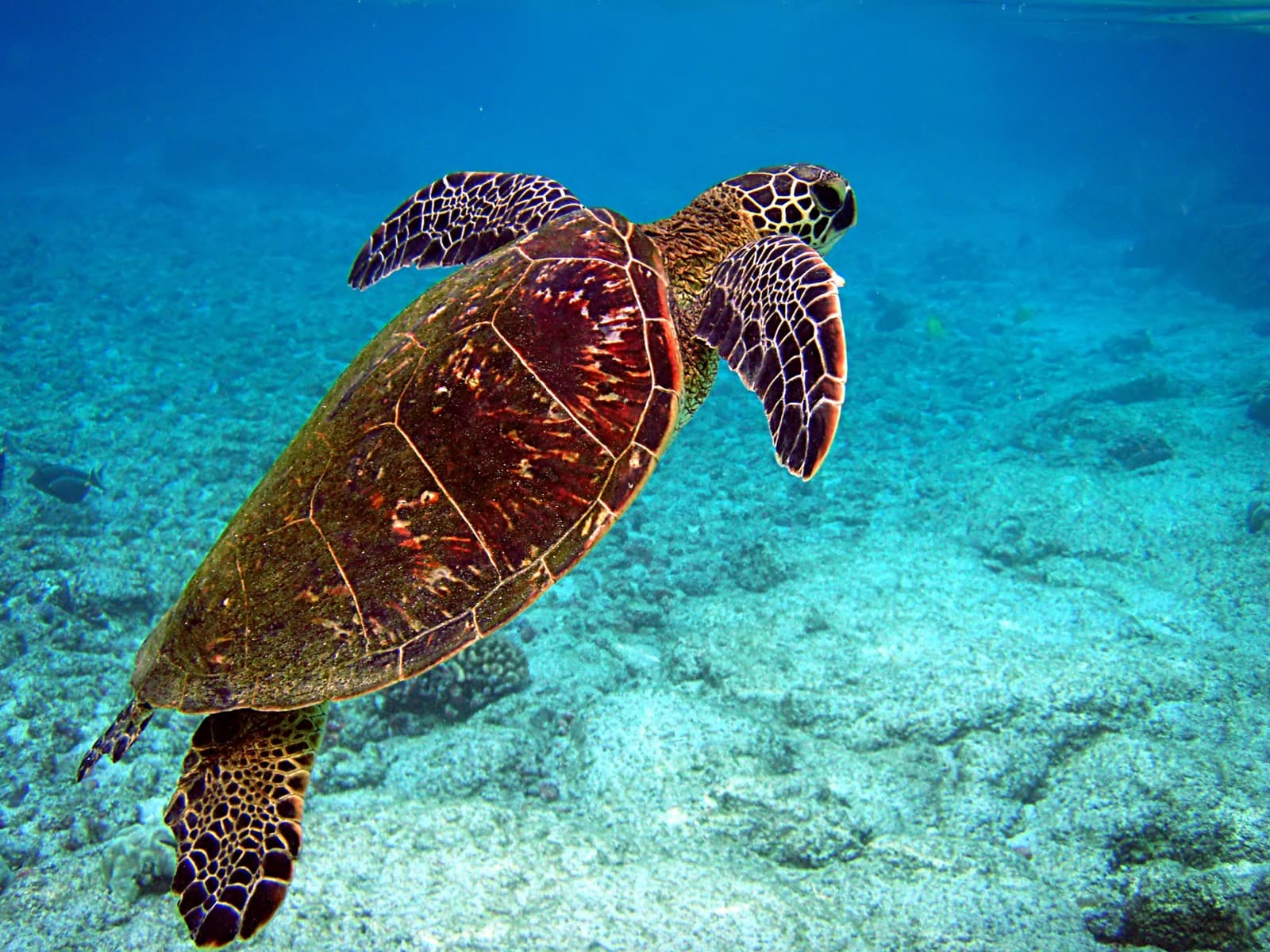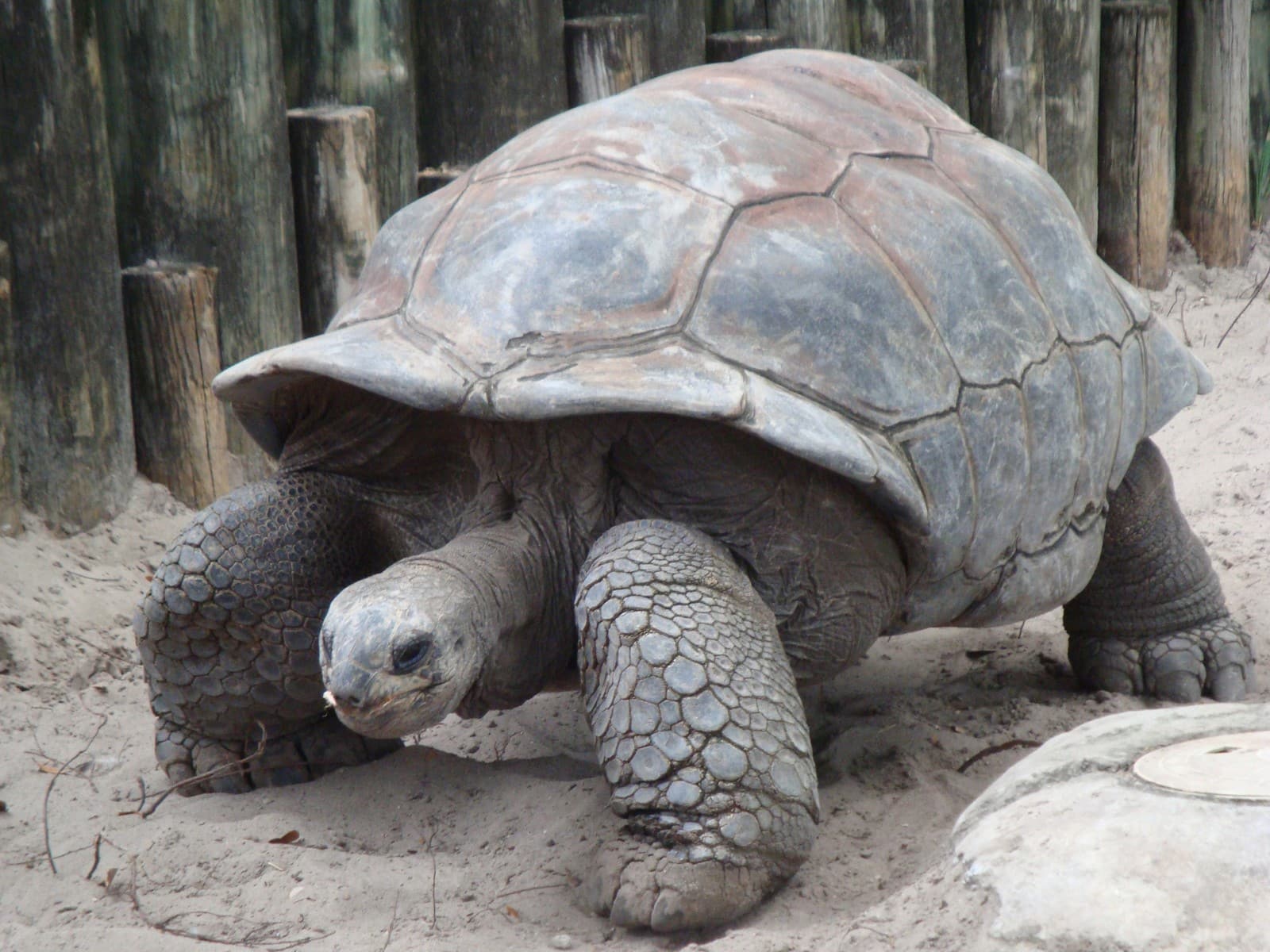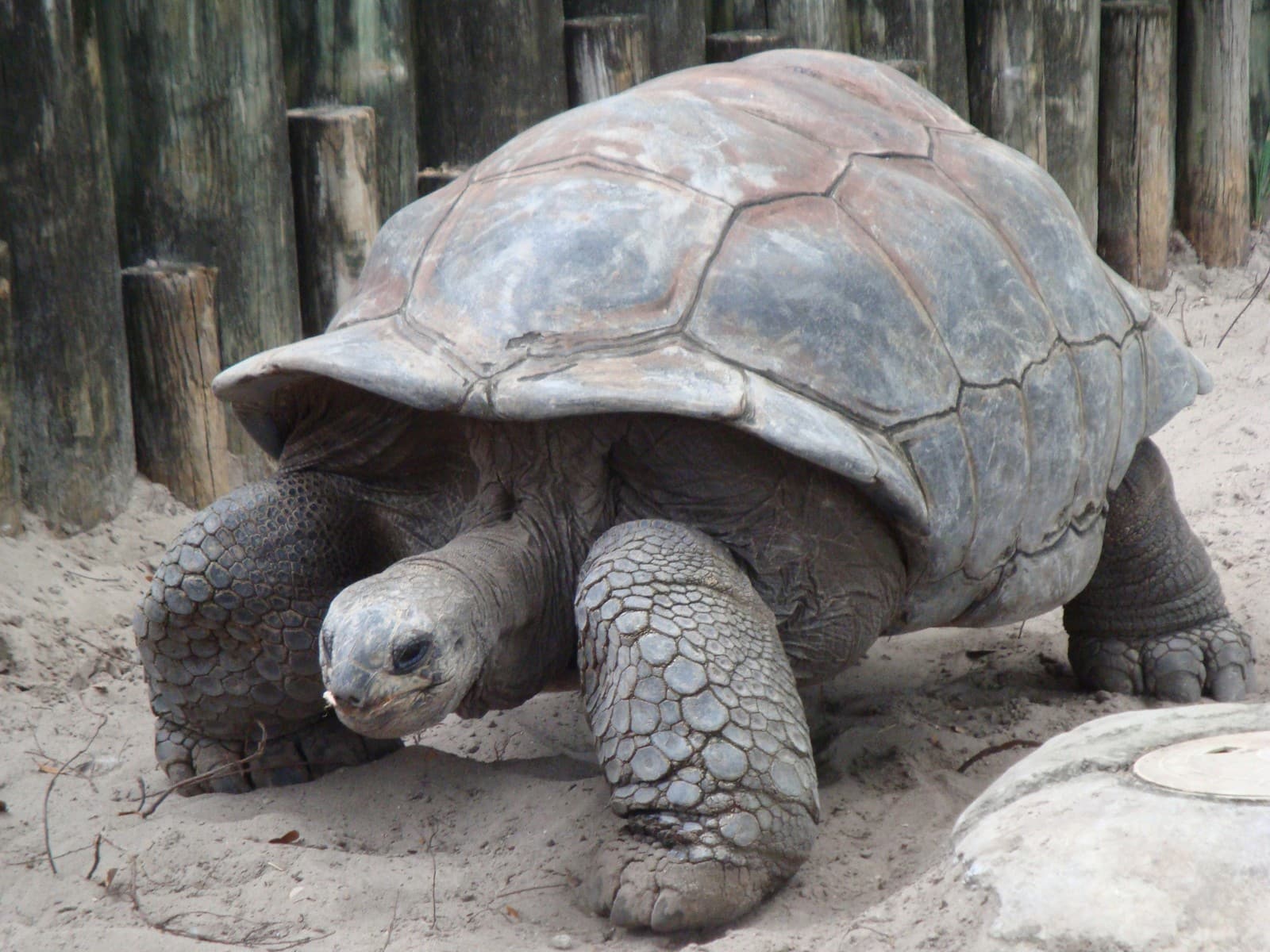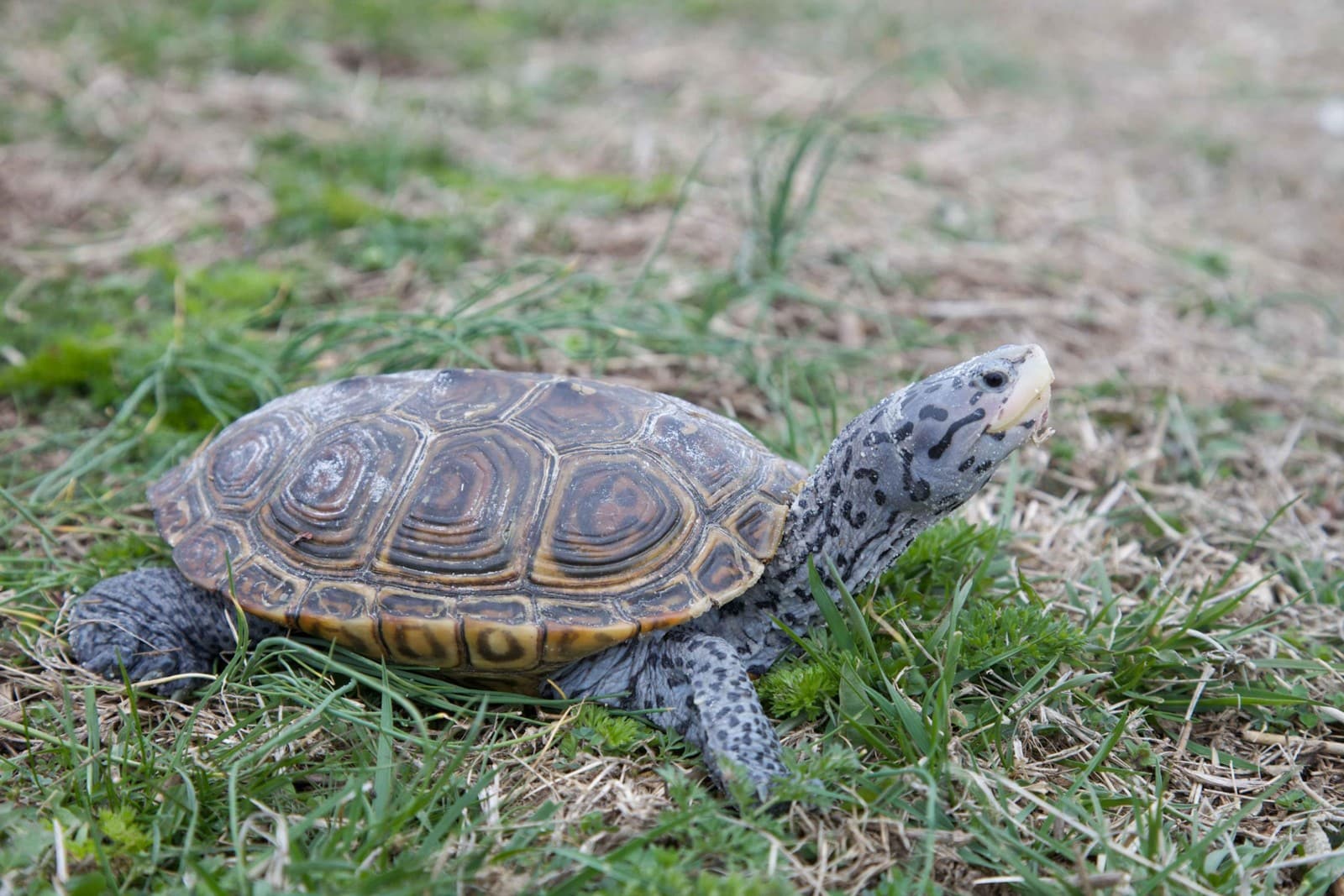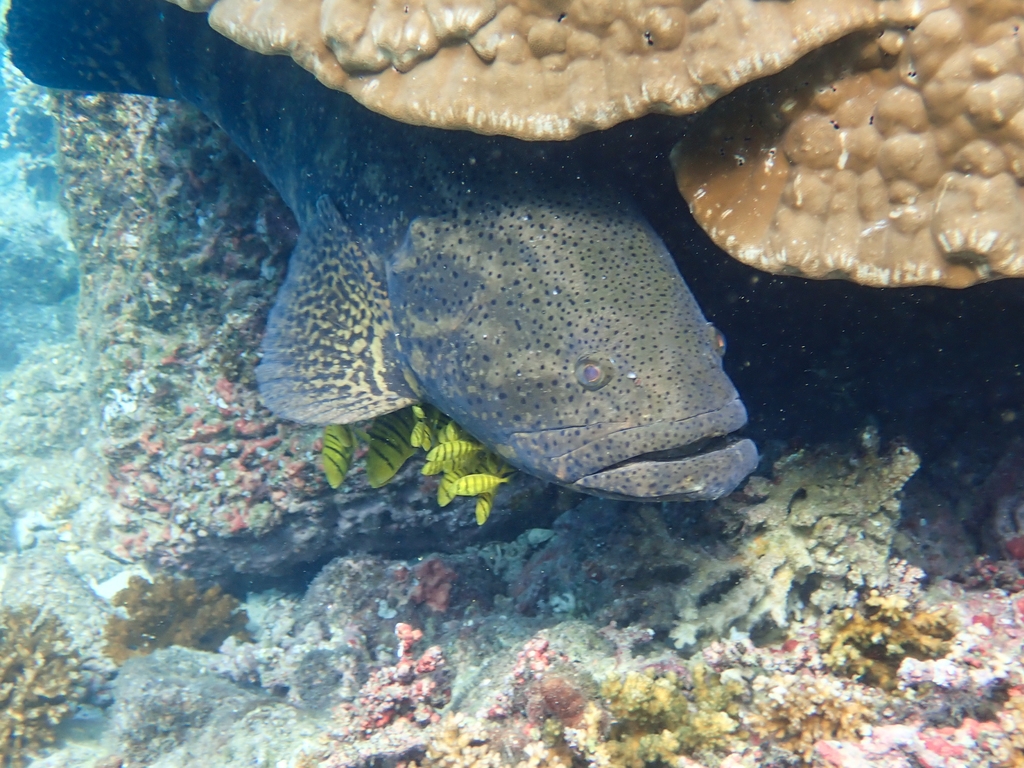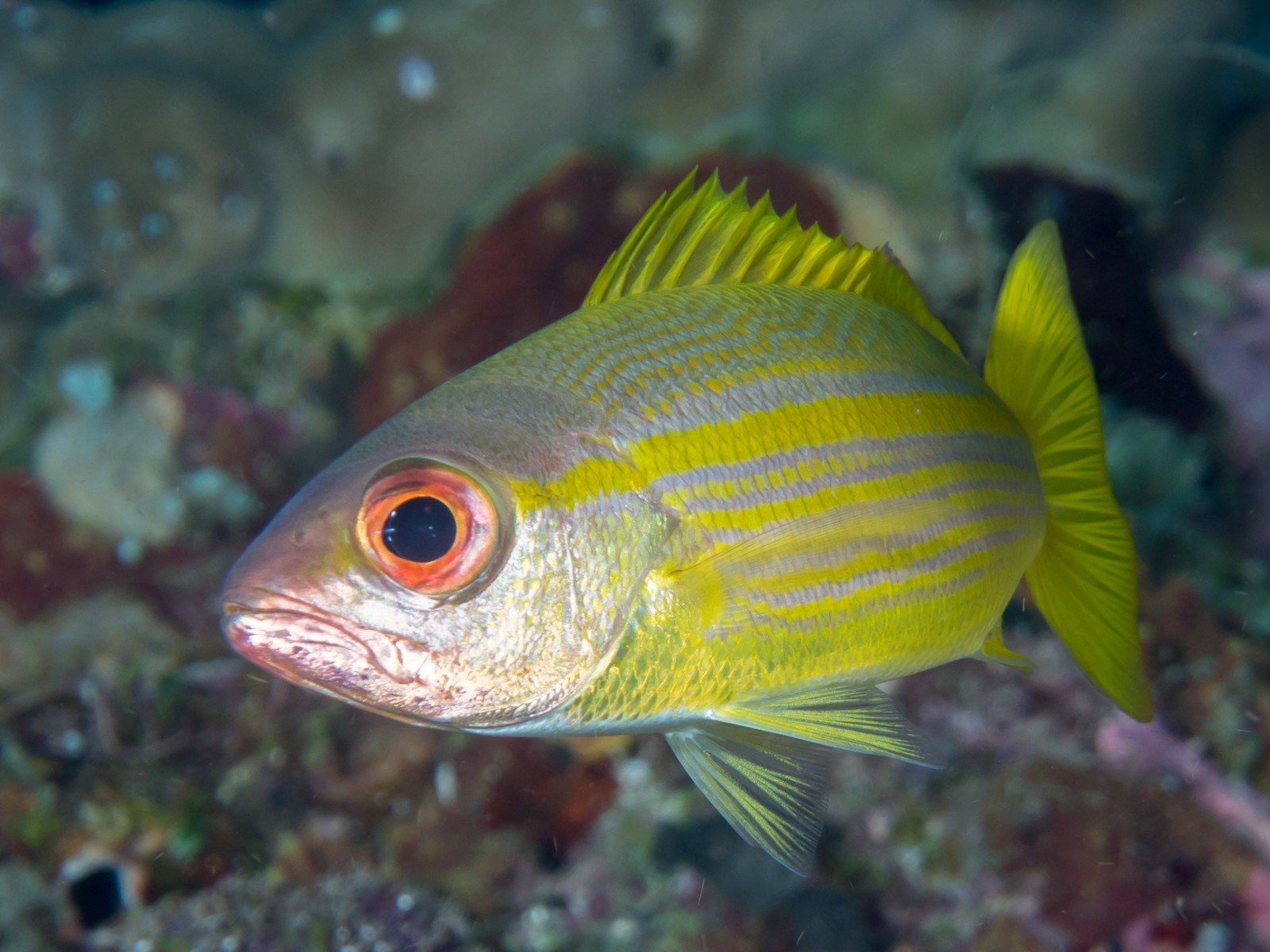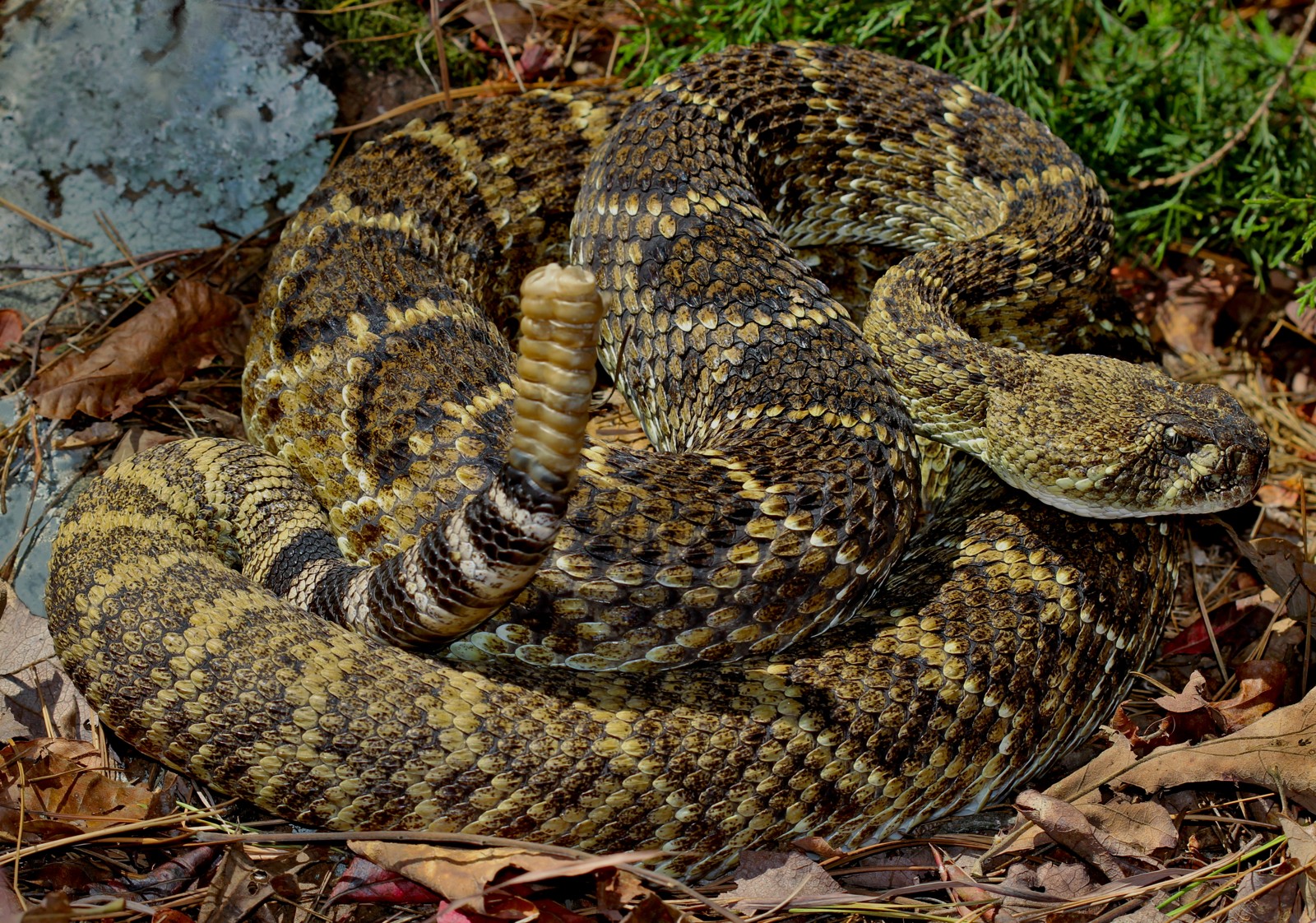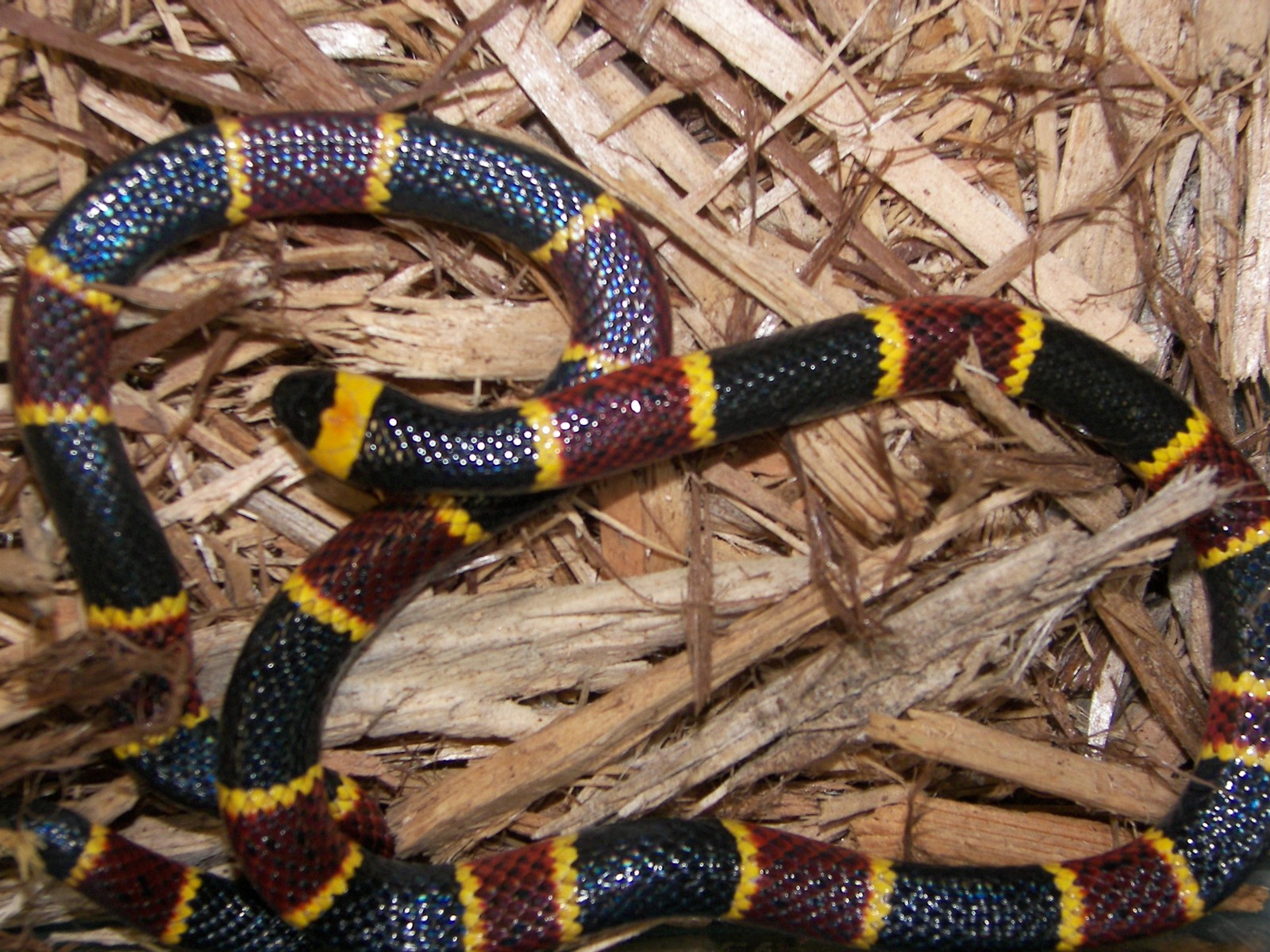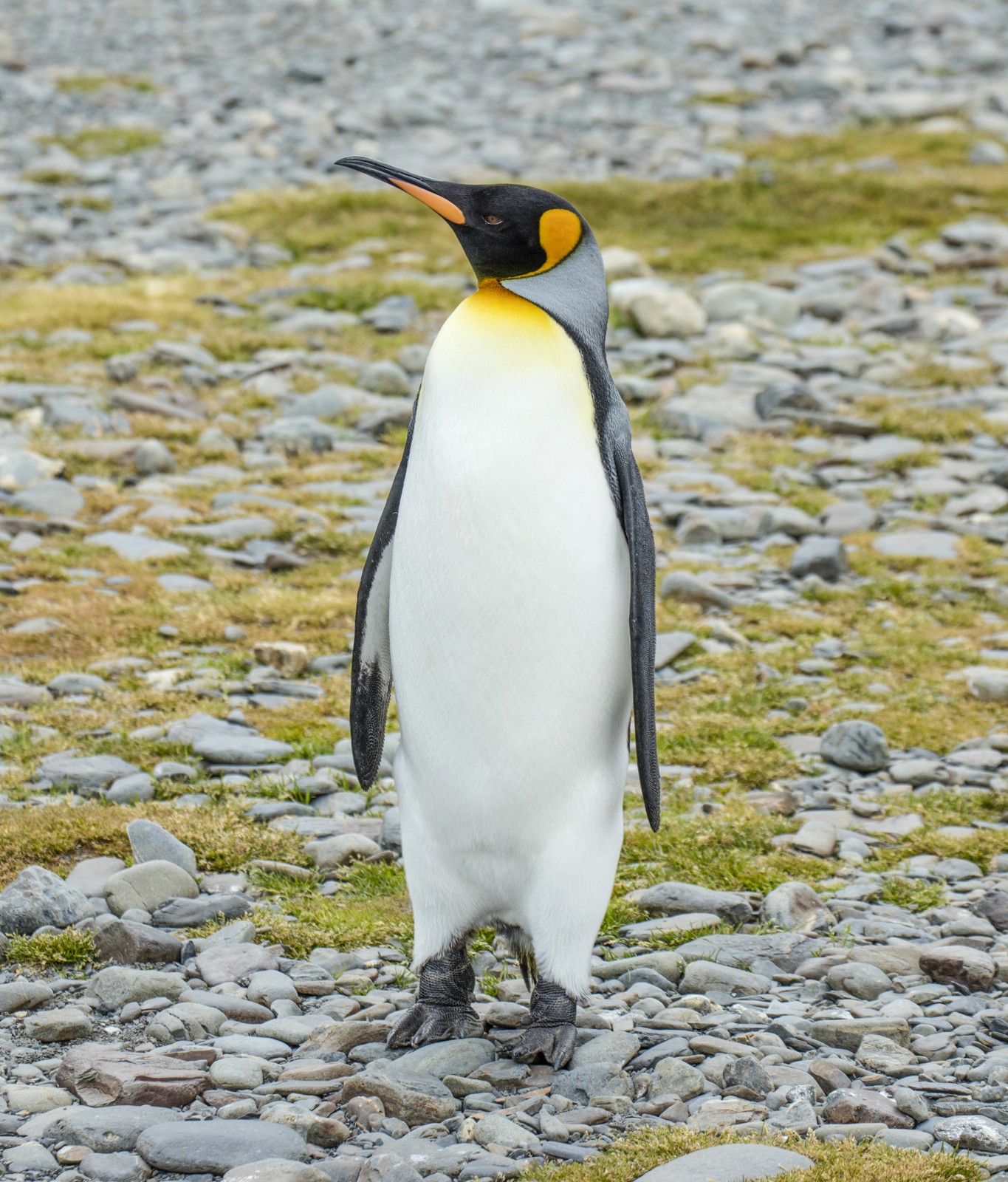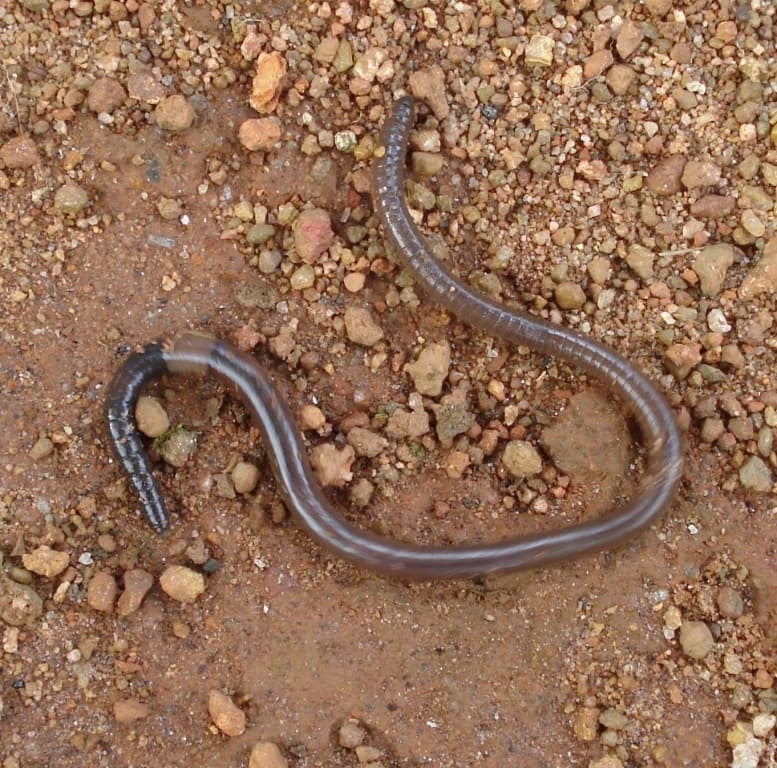Turtle vs Tortoise: A Complete Comparison
The fundamental difference between turtles and tortoises lies in their adaptation to distinct environments. Turtles are primarily aquatic creatures with streamlined shells and webbed feet, while tortoises are strictly terrestrial with dome-shaped shells and sturdy, column-like legs. Sea turtles can reach speeds of 22 mph (35 km/h) in water, whereas tortoises typically move at a leisurely pace of 0.2-0.5 mph (0.3-0.8 km/h) on land.
Understanding the turtle vs tortoise distinction helps explain their vastly different lifestyles and physical characteristics. These remarkable reptiles diverged millions of years ago, developing specialized features that reflect their respective habitats and survival strategies.
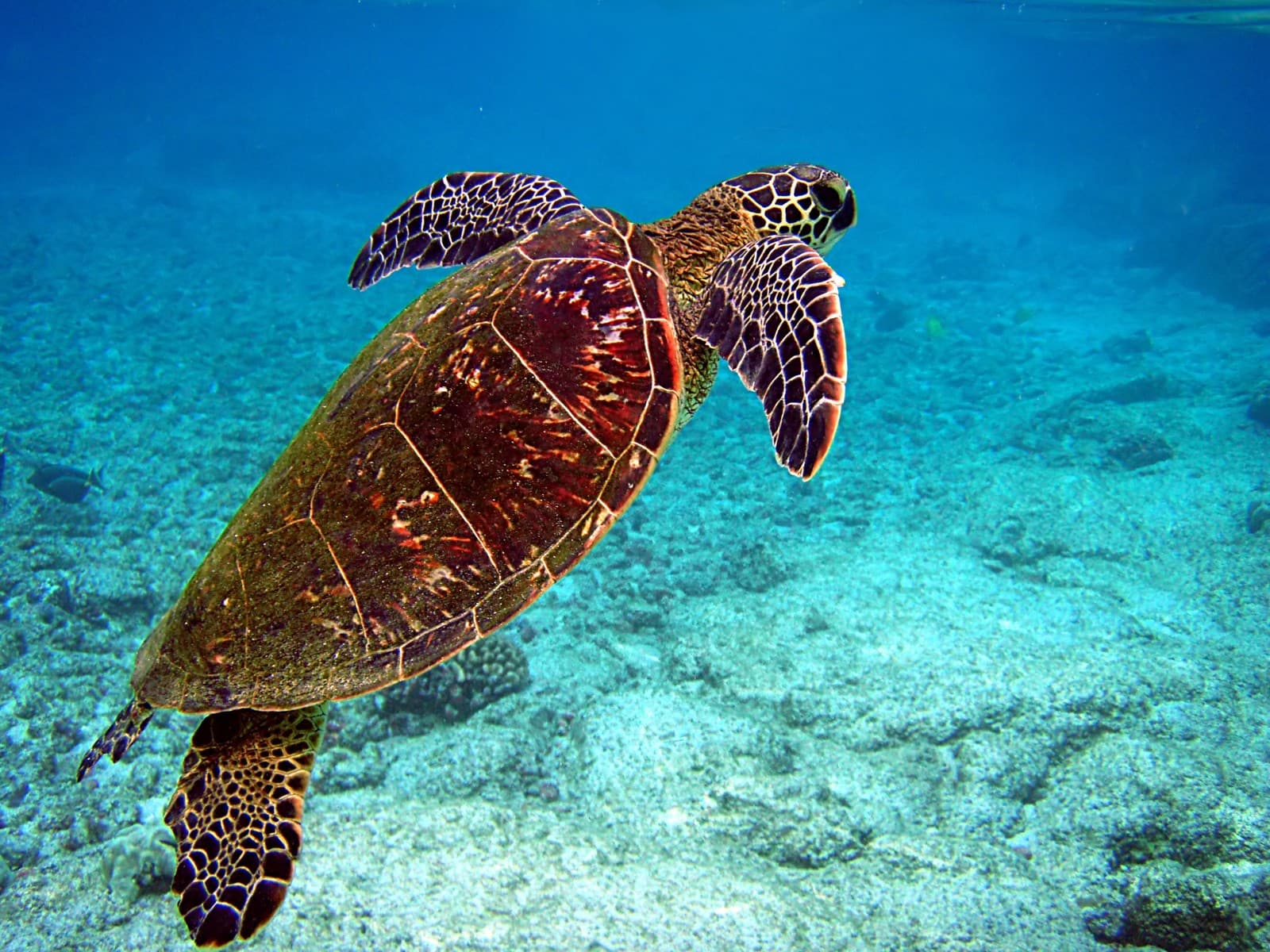
© Brocken Inaglory / CC BY-SA 3.0
A green sea turtle demonstrates the perfect hydrodynamic design that characterizes aquatic turtles, with its streamlined shell and powerful swimming flippers adapted for life in marine environments.
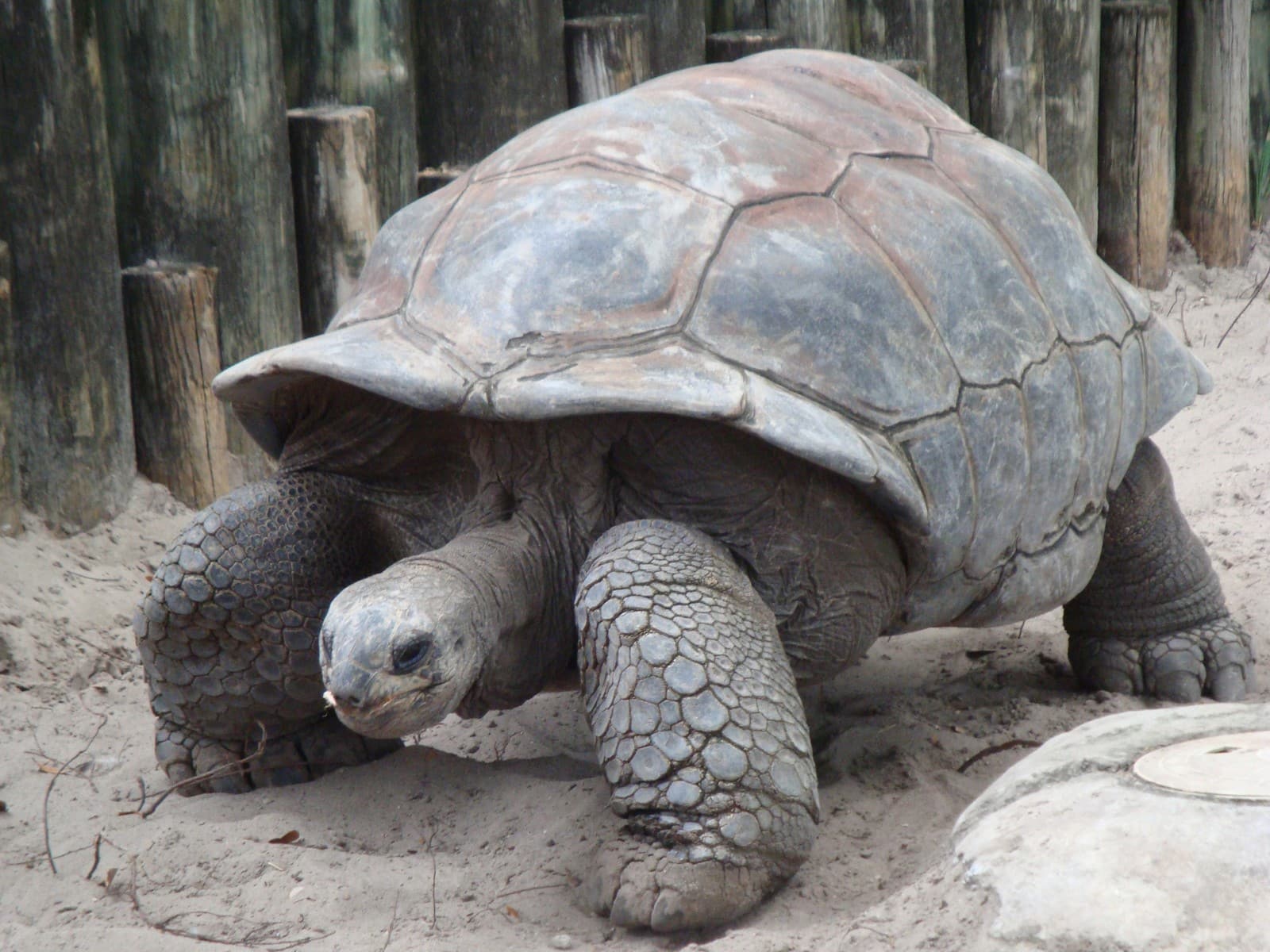
© Childzy at en.wikipedia / CC BY-SA 3.0
The Galápagos giant tortoise exemplifies typical tortoise characteristics with its high-domed shell and elephant-like legs, perfectly evolved for a terrestrial lifestyle.
Key Differences Between Turtles and Tortoises
| Feature | Turtle | Tortoise |
|---|---|---|
| Habitat | Aquatic (seas, rivers, lakes) | Terrestrial (grasslands, deserts) |
| Limbs | Flippers or webbed feet | Sturdy, column-like legs |
| Shell Shape | Streamlined, flattened | High-domed, heavy |
| Lifespan | 20-50 years (average) | 80-150 years (average) |
| Diet | Omnivorous (fish, jellyfish, plants) | Herbivorous (grasses, flowers, fruits) |
| Size Range | 4-6 feet (1.2-1.8m) for largest species | Up to 4 feet (1.2m) for largest species |
Habitat and Lifestyle Differences
Turtles spend most of their lives in water, only emerging onto land for egg-laying. Their streamlined shells reduce water resistance, while their powerful flippers enable efficient swimming. Most species can hold their breath for 4-7 hours during routine activity.
Tortoises, conversely, are exclusively land-dwellers. Their heavy, domed shells provide protection from predators, while their strong legs allow them to traverse rough terrain. Many species can survive in arid conditions, obtaining moisture from their plant-based diet.
Physical Adaptations
Shell Structure
Turtle shells are typically flatter and more streamlined, reducing drag while swimming. Their shells average 2-3 inches (5-7.6 cm) in height. Tortoise shells are distinctly domed, often reaching heights of 12-14 inches (30-35.5 cm), providing greater internal space for their lungs.
Limb Design
Turtles feature either flipper-like limbs (sea turtles) or webbed feet (freshwater species). Tortoises have thick, scaly legs with blunt claws, adapted for digging and walking on rough surfaces.
Diet and Feeding Habits
Most turtles are omnivorous, consuming:
- Small fish
- Jellyfish
- Aquatic plants
- Crustaceans
- Sea grasses
Tortoises maintain a strictly herbivorous diet including:
- Grasses
- Succulent plants
- Fruits
- Flowers
- Cacti (desert species)
Conservation Status
Both groups face significant challenges from human activities. Sea turtles are particularly vulnerable to:
- Plastic pollution
- Fishing net entanglement
- Habitat loss
- Climate change
Tortoises face threats including:
- Habitat destruction
- Illegal pet trade
- Agricultural expansion
- Invasive species
Lifespan and Growth
Turtles generally have shorter lifespans than tortoises. While sea turtles can live 50-100 years, most freshwater species live 20-50 years. Tortoises are renowned for their longevity, with many species regularly exceeding 100 years. The record holder, a Seychelles giant tortoise, reached a verified age of 188 years.
Breeding and Reproduction
Both turtles and tortoises lay eggs, but their nesting behaviors differ significantly. Sea turtles undertake long migrations to specific breeding beaches, laying 100-200 eggs per clutch. Tortoises typically lay smaller clutches of 2-12 eggs, often creating shallow nests in protected areas near their feeding grounds.
Understanding these distinctions helps ensure proper care for both types of reptiles and supports effective conservation efforts for these remarkable creatures.
